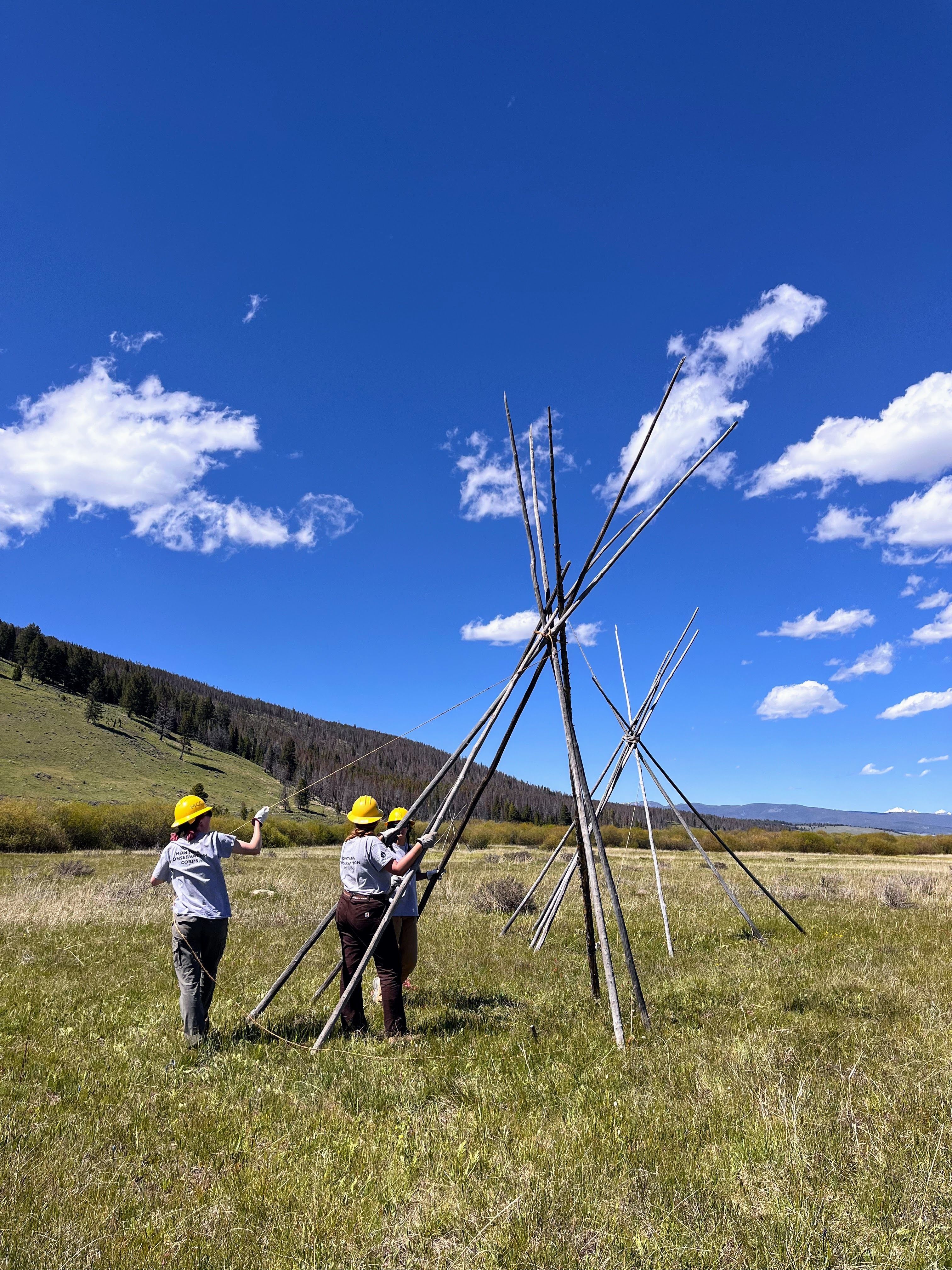
When our crew first arrived at Big Hole National Battlefield, we were greeted by the beautiful scenery of the valley below Battle Mountain, without any prior knowledge of the travesty that occurred here. We watched a short film in which we learned about the Nez Perce Flight of 1877, and thus why we were going to be doing the work that lay ahead of us. The film taught us about the devastating battle where many Nez Perce lives were lost, especially women and children.
In the valley, there were 50+ tipis built which have remained for years as a memorial of the Nez Perce camp that once stood there. Our first task was to remove the broken and fallen tipis from the memorial so that we could build new ones. Since the Nez Perce were forced out of their camp in such a hurry, most of them could not have proper burials for their family members. So they buried their loved ones in the valley and on the mountain. This meant that we were working on sacred land, which felt like a great honor to do so. We tread respectfully and carefully, paying our respects to the families that believed they would be safe here.
The next few days our work moved up the mountainside, where we worked along the Howitzer Capture site (where the US military attacked from) on forest fuel reduction. In 2021, there was a wildfire that came through this area in which many dead trees remained, some still standing and some fallen.
In between working on building tipis and fuel reduction on the hillside, we had the privilege of working with the Invasive Plant Management team from Glacier. We sprayed herbicide for spotted knapweed throughout the hillside and other areas of the park. This was done to ensure that the native plants that remained in the park were able to continue to thrive and grow without the threat of invasives.
Our last few days included building the final tipis, which totaled around 20 that we built and 50+ total standing, as well as fuel reduction. After spending a week working on sacred land, we felt immense honor to have been given this opportunity. The remainder of our time on Big Hole Battlefield was spent paying our respects in fully immersing ourselves in the history of the land and its importance while giving back to it. Although there is so much more history to be learned, we now know the strong history that lies behind the beautiful land of Big Hole.

![[Image Description: Two MCC members taking a brief break; one is sitting on a rock, the other is standing nearby. They are both in their uniforms, looking out at the expansive, mountain view surrounding them.]](https://cdn.firespring.com/images/c3f85e97-43a9-4810-8081-e8e6338173d0.jpeg)



